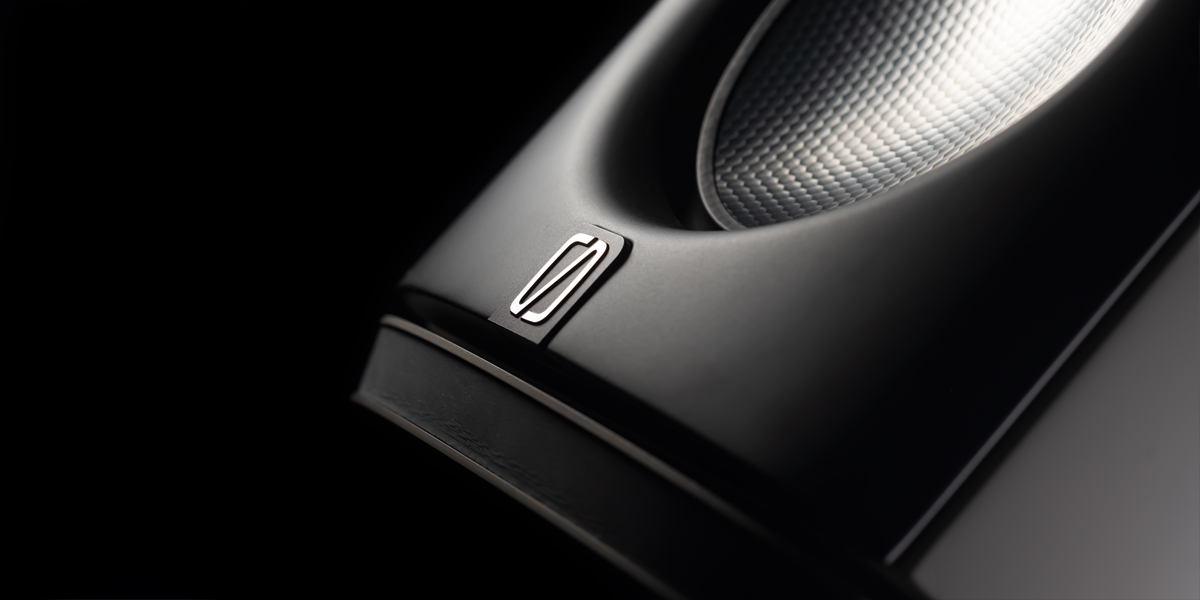Where I live, €94’000 can buy you a Porsche Taycan straight from the dealer or a Børresen M1 two-way speaker set. Since I’m not a car expert, I don’t have anything meaningful to say about the former, on the contrary to the latter that was delivered to me a few weeks ago. Now it’s time to tell its story. Enjoy!
Checkmate
If you were a manufacturer primarily known for upscale audio products, how would you grow your business upon securing your position on the market? That’s the question Audio Group Denmark owners had to ask themselves a while ago. To recap, until recently this Danish audio house had three brands under its umbrella; Aavik (electronics), Ansuz (cables and accessories) and Børresen (speakers), respectively founded in 2013, 214 and 2019 by Lars Kristensen and Michael Børresen. Four years ago I visited their Aalborg HQ for the first time and reported my findings here. Back then this 1000m2 building accommodated 16 employees in total. Fast forward to early 2023, when I went there again and saw the thrice as large facility with 50-strong crew. The management underwent some structural changes, too. The new investor Kent Sørensen of Vækst-Invest stepped in as the company’s new CFO, Michael remained the CTO and Lars took the position of the CMO/CSO. Gryphon founder Flemming Rasmussen also joined their ranks as a visual design consultant. On top of that, Audio Group Denmark distributor network currently lists more than 60 retailers spread across five continents, so the business is booming. Still, fuel is needed to keep that flame nice and big, which brings us back to the original question. Some successful upper-echelon audio houses expand by downscaling their costly already field-tested tech, so that it can make its way into more affordable products meant for broader audience. Small margins offset by a high number of units sold often secure steady cash flow, so adding an entry-level lineup is a reasonable practical route to take indeed. The alternate path being the exact opposite demands pouring even more resources into R&D, to land higher-tiered even costlier designs meant to elevate the previous ceiling. One approach doesn’t exclude the other. I also think that the feedback from distributors and customers is useful in deciding how to best move forward. We don’t know how much that factors in, however. We only get to see results in form of new ranges and products.
Some successful upper-echelon audio houses expand by downscaling their costly already field-tested tech, so that it can make its way into more affordable products meant for broader audience. Small margins offset by a high number of units sold often secure steady cash flow, so adding an entry-level lineup is a reasonable practical route to take indeed. The alternate path being the exact opposite demands pouring even more resources into R&D, to land higher-tiered even costlier designs meant to elevate the previous ceiling. One approach doesn’t exclude the other. I also think that the feedback from distributors and customers is useful in deciding how to best move forward. We don’t know how much that factors in, however. We only get to see results in form of new ranges and products. Audio Group Denmark higher ups simultaneously expanded their roster on both its ends. Their fourth latest brand Axxess that had its debut in early 2023 for now lists just one promising AiO device named Forte. This mainstream affair priced at €5’000 determines the manufacturer’s baseline as far as electronics go, while the new Børresen X2 floorstander set sold for €8’800/pr follows suit on the speaker front. These two products are Danes’ inviting wink at shoppers interested in a simple setup infused with their signature sonic DNA for less than €15’000. Just so we’re clear, that’s a lot of money of course. The thing is, until recently it wouldn’t get you far in the Audio Group Denmark portfolio. These new cost-effective efforts significantly below their dearer siblings are a pleasant surprise, so in due time I intend to take them under my scope. Their makers however are primarily known for operating at the industry’s stratosphere. That’s in fact just the tier where they impress the most. I’ve been there twice already, here and here. This time around we’re about to reach even higher.
Audio Group Denmark higher ups simultaneously expanded their roster on both its ends. Their fourth latest brand Axxess that had its debut in early 2023 for now lists just one promising AiO device named Forte. This mainstream affair priced at €5’000 determines the manufacturer’s baseline as far as electronics go, while the new Børresen X2 floorstander set sold for €8’800/pr follows suit on the speaker front. These two products are Danes’ inviting wink at shoppers interested in a simple setup infused with their signature sonic DNA for less than €15’000. Just so we’re clear, that’s a lot of money of course. The thing is, until recently it wouldn’t get you far in the Audio Group Denmark portfolio. These new cost-effective efforts significantly below their dearer siblings are a pleasant surprise, so in due time I intend to take them under my scope. Their makers however are primarily known for operating at the industry’s stratosphere. That’s in fact just the tier where they impress the most. I’ve been there twice already, here and here. This time around we’re about to reach even higher.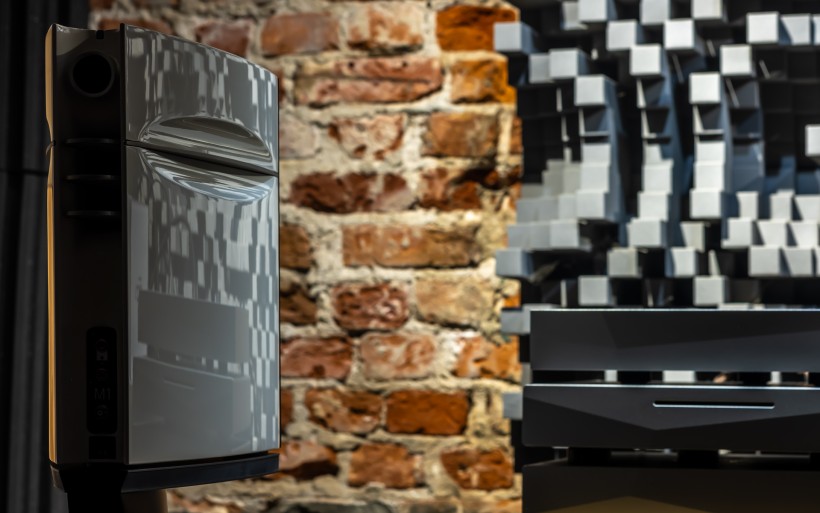 I remember well my first trip to the Danish soil. One of several setups presented to me there was built upon top shelf Børresen 01 monitors priced at €25’500, which were sent to me one year later and covered here. Infused with exotic tech, unusually designed and posh, this still was a regular stand-mount two-way type at its core. As such it was clearly meant for aficionados of the breed, who live large and have pockets deep enough to see such expenses as casual guilty pleasures. Back then the manufacturer’s 0 range was the best they had in store, so at some point all the technology embedded in it had to trickle down to more affordable designs. Now we know that it did and bore fruit in form of series Z and X. These Vikings however are quite relentless in their pursuit of peak performance and spare no coin on exotic R&D to get there. That said, their aspirations didn’t end on the already very expensive 01 trooper. Upon my second visit to their premises earlier this year I’d heard its even costlier Silver Supreme edition. Then it was also compared to the brand new M1 model designed as Danes’ new king of the monitor hill. The audible difference between these products wasn’t small by any means and figures on their price tags largely reflected that. Since the newcomer flagship retails for, hold on to your chair, €94’000, it was only fair to think that it won’t ever make its way to my listening space, until it unexpectedly did. Audio Group Denmark new local distributor Audio Emotions stepped in and provided a sample straight from the recent Audio Video Show, so the game was afoot. Here it should be said that a speaker set this expensive really ought to go against a similarly tiered sparring partner, which I obviously didn’t have at my disposal. I couldn’t find any other passive two-way affair that’d actually fit the M1’s status on this front, so I don’t think that anyone does. This one may even be the current record holder as the most expensive in its class, but that’s not the main reason why I agreed to making this review. More on that later.
I remember well my first trip to the Danish soil. One of several setups presented to me there was built upon top shelf Børresen 01 monitors priced at €25’500, which were sent to me one year later and covered here. Infused with exotic tech, unusually designed and posh, this still was a regular stand-mount two-way type at its core. As such it was clearly meant for aficionados of the breed, who live large and have pockets deep enough to see such expenses as casual guilty pleasures. Back then the manufacturer’s 0 range was the best they had in store, so at some point all the technology embedded in it had to trickle down to more affordable designs. Now we know that it did and bore fruit in form of series Z and X. These Vikings however are quite relentless in their pursuit of peak performance and spare no coin on exotic R&D to get there. That said, their aspirations didn’t end on the already very expensive 01 trooper. Upon my second visit to their premises earlier this year I’d heard its even costlier Silver Supreme edition. Then it was also compared to the brand new M1 model designed as Danes’ new king of the monitor hill. The audible difference between these products wasn’t small by any means and figures on their price tags largely reflected that. Since the newcomer flagship retails for, hold on to your chair, €94’000, it was only fair to think that it won’t ever make its way to my listening space, until it unexpectedly did. Audio Group Denmark new local distributor Audio Emotions stepped in and provided a sample straight from the recent Audio Video Show, so the game was afoot. Here it should be said that a speaker set this expensive really ought to go against a similarly tiered sparring partner, which I obviously didn’t have at my disposal. I couldn’t find any other passive two-way affair that’d actually fit the M1’s status on this front, so I don’t think that anyone does. This one may even be the current record holder as the most expensive in its class, but that’s not the main reason why I agreed to making this review. More on that later. The local distributor’s warehouse located mere four kilometers away from my listening room trivialized logistics. AudioEmotions spokesman Jacek delivered three large boxes in his car. The main cardboard reinforced on the sides via rectangular wooden supports stored both speakers in-between two foamy liners. The upper insert accommodated six top level Darkz Z2S isolators and two 12V DC power supplies for dithering circuits in the M1’s crossovers. Each pre-assembled stand had its own separate double box and unpacking everything was a breeze that took the two of us maybe 10 minutes tops. Although all three coffins seemed robust enough to survive multiple travels, you wouldn’t tell that they stored a product as pricy as the M1. The overall packaging scheme was modest, utilitarian and far from fancy. Considering that boxes become useless bits past extracting their contents, that didn’t bother me in the slightest.
The local distributor’s warehouse located mere four kilometers away from my listening room trivialized logistics. AudioEmotions spokesman Jacek delivered three large boxes in his car. The main cardboard reinforced on the sides via rectangular wooden supports stored both speakers in-between two foamy liners. The upper insert accommodated six top level Darkz Z2S isolators and two 12V DC power supplies for dithering circuits in the M1’s crossovers. Each pre-assembled stand had its own separate double box and unpacking everything was a breeze that took the two of us maybe 10 minutes tops. Although all three coffins seemed robust enough to survive multiple travels, you wouldn’t tell that they stored a product as pricy as the M1. The overall packaging scheme was modest, utilitarian and far from fancy. Considering that boxes become useless bits past extracting their contents, that didn’t bother me in the slightest. Each Børresen M1 speaker measures (H x W x D) 36,8 x 20 x 44 cm and shows 14,1kg on the scale, so is some 3kg heavier than its 01 sibling yet otherwise identical. Each stand tailored for it adds 9,5kg extra and 73,5cm to the overall height. The entire unusually deep over a meter tall structure still remains easily manageable by one adult. The Børresen M1 is a vented 2-way monitor design. The manufacturer’s specs list 87dB/1W sensitivity, 40Hz-50kHz frequency response, 6Ω nominal impedance and recommended amps capable of outputting at least 50W per channel into that load. Here I’d strongly suggest companions at least twice as strong for the M1 and especially in large spaces, but we’ll get to that shortly. Available finishes are glossy black and white. It’s worth knowing that the basic Børresen 01 can be had without any extras other than six entry-level Darkz C2Ts included in the box. Although two stands and six higher-tiered Ansuz Darkz T2S decouplers provided with my loaner sample added €8’600 to the bill, these were optional expenses. Meanwhile, six top shelf Ansuz Darkz Z2S isolators and two premium stands in the M1 package are mandatory accessories included in its price. Danes consider these items as critical for their best monitor’s performance thus inseparable. Although some people may not like this policy, it’ll speak to customers who can afford the M1. Such clients pay top dollar to not worry about upgrades. They’re simply used to having everything best from the get-go. More importantly, neither Z2S discs nor stands are cheap meaningless additives. These zirconium pucks priced at €3’500/ea. are the very best anti-vibration isolators I’d sampled to date and by far, while titanium-infused M1 legs probably want at least €6’500 or more. Without these components the M1 would’ve been an awfully expensive speaker still, but they make up almost a third of its sticker. Just sayin’…
Each Børresen M1 speaker measures (H x W x D) 36,8 x 20 x 44 cm and shows 14,1kg on the scale, so is some 3kg heavier than its 01 sibling yet otherwise identical. Each stand tailored for it adds 9,5kg extra and 73,5cm to the overall height. The entire unusually deep over a meter tall structure still remains easily manageable by one adult. The Børresen M1 is a vented 2-way monitor design. The manufacturer’s specs list 87dB/1W sensitivity, 40Hz-50kHz frequency response, 6Ω nominal impedance and recommended amps capable of outputting at least 50W per channel into that load. Here I’d strongly suggest companions at least twice as strong for the M1 and especially in large spaces, but we’ll get to that shortly. Available finishes are glossy black and white. It’s worth knowing that the basic Børresen 01 can be had without any extras other than six entry-level Darkz C2Ts included in the box. Although two stands and six higher-tiered Ansuz Darkz T2S decouplers provided with my loaner sample added €8’600 to the bill, these were optional expenses. Meanwhile, six top shelf Ansuz Darkz Z2S isolators and two premium stands in the M1 package are mandatory accessories included in its price. Danes consider these items as critical for their best monitor’s performance thus inseparable. Although some people may not like this policy, it’ll speak to customers who can afford the M1. Such clients pay top dollar to not worry about upgrades. They’re simply used to having everything best from the get-go. More importantly, neither Z2S discs nor stands are cheap meaningless additives. These zirconium pucks priced at €3’500/ea. are the very best anti-vibration isolators I’d sampled to date and by far, while titanium-infused M1 legs probably want at least €6’500 or more. Without these components the M1 would’ve been an awfully expensive speaker still, but they make up almost a third of its sticker. Just sayin’… Although the M1 impresses on assembly, attention to details and modern racy styling, its modest dress code doesn’t quite communicate how costly it really is. Many speaker sets priced at a fracture of today’s money look just as good and posh. Then again, at Audio Group Denmark flashy visuals aren’t a thing and probably won’t ever be. Danes stick to the minimalist clean objectively practical Scandinavian aesthetic that’s far from extravagance. Some users may like it, others won’t. Personally I have nothing against this. We don’t know where HDF cabinets for the M1 and its entire range are made, but it’s likely that they’re outsourced at the Sino plant, also known for woodwork for i.e. Sonus faber and Dynaudio. The M1’s cheeks sloped towards its narrow rear end make it quite similar to its 01 stablemate, but there are several major differences between them. Flared openings on the latter’s sides to decompress tweeters were replaced by a long round bore on the flagship’s back that serves the same purpose. Aluminium braces in-between cavities on the M1 panels reinforce the entire structure to make it more rigid and mechanically stable, and so does one long aluminium insert inlaid on its top.
Although the M1 impresses on assembly, attention to details and modern racy styling, its modest dress code doesn’t quite communicate how costly it really is. Many speaker sets priced at a fracture of today’s money look just as good and posh. Then again, at Audio Group Denmark flashy visuals aren’t a thing and probably won’t ever be. Danes stick to the minimalist clean objectively practical Scandinavian aesthetic that’s far from extravagance. Some users may like it, others won’t. Personally I have nothing against this. We don’t know where HDF cabinets for the M1 and its entire range are made, but it’s likely that they’re outsourced at the Sino plant, also known for woodwork for i.e. Sonus faber and Dynaudio. The M1’s cheeks sloped towards its narrow rear end make it quite similar to its 01 stablemate, but there are several major differences between them. Flared openings on the latter’s sides to decompress tweeters were replaced by a long round bore on the flagship’s back that serves the same purpose. Aluminium braces in-between cavities on the M1 panels reinforce the entire structure to make it more rigid and mechanically stable, and so does one long aluminium insert inlaid on its top.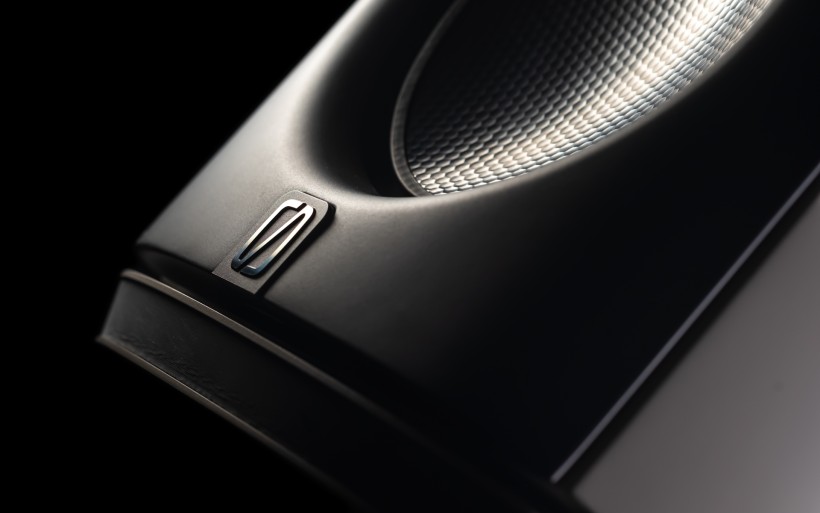 The M1’s gently tilted enclosures slim all the way towards the unusually narrow rear for two reasons; to tame internal standing waves and suggest visually agile aesthetic to match the product’s alike sonic profile. The 01’s grainy matte-black front panels were easily removable, but not those in the M1. Who knows, perhaps if I were a bit more forceful that would’ve done the trick. The loaner delivered to me was in mint condition and I intended to keep it that way. Either way, foreheads of these two products are identical, so the M1 up front looks just as clean with its sloped driver openings and the brand logo just a hair below the mid/woofer. Three round cavities on its underbelly accommodate Ansuz Darkz isolators; two just next to the front panel and one near the deeply concaved business end. In that area just below the tweeter bore we see a large rectangular bass-reflex tunnel armed with three protruding skeletal aluminium vanes. That’s the manufacturer’s way of limiting air turbulence in it and in-rom interaction. Vertically aligned speaker posts a bit below this opening are flush with their plate and compliant only with banana/BFA-style terminations, which may be a con to some users. Luckily the M1’s 4cm-wide rear easily accepted large wooden barrels of my Boenicke S3 speaker cables. The Børresen 01’s horizontal speaker taps with minimal clearance didn’t allow for that, so I appreciate this useful rework.
The M1’s gently tilted enclosures slim all the way towards the unusually narrow rear for two reasons; to tame internal standing waves and suggest visually agile aesthetic to match the product’s alike sonic profile. The 01’s grainy matte-black front panels were easily removable, but not those in the M1. Who knows, perhaps if I were a bit more forceful that would’ve done the trick. The loaner delivered to me was in mint condition and I intended to keep it that way. Either way, foreheads of these two products are identical, so the M1 up front looks just as clean with its sloped driver openings and the brand logo just a hair below the mid/woofer. Three round cavities on its underbelly accommodate Ansuz Darkz isolators; two just next to the front panel and one near the deeply concaved business end. In that area just below the tweeter bore we see a large rectangular bass-reflex tunnel armed with three protruding skeletal aluminium vanes. That’s the manufacturer’s way of limiting air turbulence in it and in-rom interaction. Vertically aligned speaker posts a bit below this opening are flush with their plate and compliant only with banana/BFA-style terminations, which may be a con to some users. Luckily the M1’s 4cm-wide rear easily accepted large wooden barrels of my Boenicke S3 speaker cables. The Børresen 01’s horizontal speaker taps with minimal clearance didn’t allow for that, so I appreciate this useful rework. The M1’s 4,5″ mid/woofer and planarmagnetic tweeter are highly advanced sophisticated efforts manufactured in house. The dynamic driver’s ‘iron-less’ motor incorporates N52 neodymium magnets and two silver poles to lower a voice coil’s inductance, which improves its linearity and increases current delivery. That in turn results in quicker more responsive membrane strokes and lower acoustic impedance peaks. These silver rings are cast from tiny pellets at the Aalborg facility and then put inside cryogenic vats to further reduce their inductance by another 6-8%. During the first 24 hours of this 3-day process all parts are slowly cooled down to -196°C and remain in that temperature for as long. On the last day they’re gradually brought back to the room temperature. The entire procedure takes this long to avoid thermal stress of the material that undergoes it. The membrane is built upon a lightweight Nomex honeycomb core under two spread tow carbon fiber skins with aramid honeycomb spacers in-between. The company’s signature Ansuz Supreme coating applied to the cone’s last titanium surface in a HI-PIMS (High Power Impulse Magnetron Sputtering) machine creates uniform layers of zirconium, tungsten and aluminium chrome nitride. If you’re wondering why all this effort, to Dane’s that’s what it takes to make a very light super-stiff membrane with unwanted resonances pushed two octaves above the effective frequency range. Most Børresen speaker ranges are available in three versions; basic, Cryo Edition and Silver Supreme Edition. The entire range M already packs these otherwise optional upgrades.
The M1’s 4,5″ mid/woofer and planarmagnetic tweeter are highly advanced sophisticated efforts manufactured in house. The dynamic driver’s ‘iron-less’ motor incorporates N52 neodymium magnets and two silver poles to lower a voice coil’s inductance, which improves its linearity and increases current delivery. That in turn results in quicker more responsive membrane strokes and lower acoustic impedance peaks. These silver rings are cast from tiny pellets at the Aalborg facility and then put inside cryogenic vats to further reduce their inductance by another 6-8%. During the first 24 hours of this 3-day process all parts are slowly cooled down to -196°C and remain in that temperature for as long. On the last day they’re gradually brought back to the room temperature. The entire procedure takes this long to avoid thermal stress of the material that undergoes it. The membrane is built upon a lightweight Nomex honeycomb core under two spread tow carbon fiber skins with aramid honeycomb spacers in-between. The company’s signature Ansuz Supreme coating applied to the cone’s last titanium surface in a HI-PIMS (High Power Impulse Magnetron Sputtering) machine creates uniform layers of zirconium, tungsten and aluminium chrome nitride. If you’re wondering why all this effort, to Dane’s that’s what it takes to make a very light super-stiff membrane with unwanted resonances pushed two octaves above the effective frequency range. Most Børresen speaker ranges are available in three versions; basic, Cryo Edition and Silver Supreme Edition. The entire range M already packs these otherwise optional upgrades.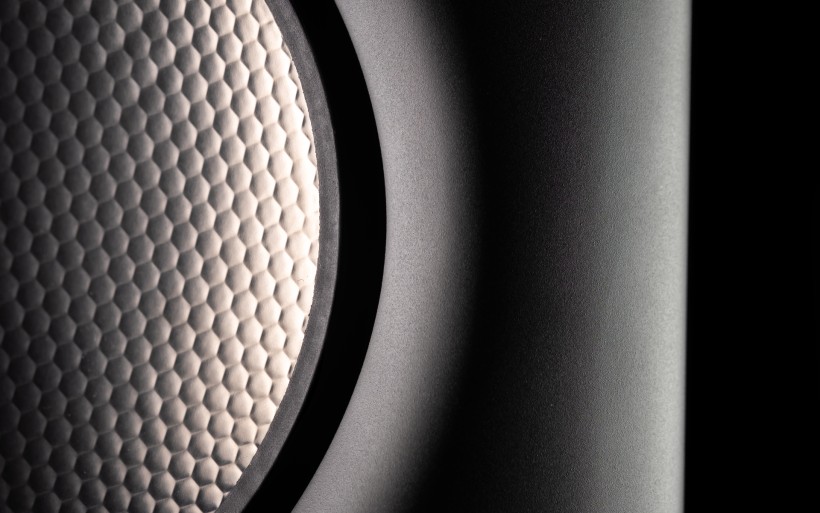 If I were to highlight the M1’s most unusual element of them all, its mid/woofer basket is my easy pick. The manufacturer explains that this visually alien-like asymmetrical element is 3D-printed from zirconium to make it as stiff as possible, which results in minimal vibration and resonance. The on-site description of the basket also informs us about its cavities filled with zirconium powder to further increase its damping properties. This oddly shaped unusual two-piece part is unlike any other such a component I’ve seen. I was also told that these baskets are extremely costly to manufacture, each eats up thousands of Euros. The company’s signature planarmagnetic tweeter isn’t usual either. Its large membrane based on a nylon/aramid substrate under aluminium coating weighs next to nothing (0,01g of moving mass). Although all Børresen transformerless tweeters share the same membrane and are thermally stable up to 600°C, the one used in the series M relies on the largest most powerful perforated motor. Today’s enclosure also underwent some internal changes in comparison to the 01 version I’ve reviewed. The latter’s both drivers shared one space designed to have them acoustically invisible one to another, mainly due to a perforated HDF insert just behind the mid/woofer, meant to create pressure right next to it higher than anywhere else in the box. Transducers in the M1 occupy separate compartments additionally reinforced by 5mm-thick internal pressed-wood braces.
If I were to highlight the M1’s most unusual element of them all, its mid/woofer basket is my easy pick. The manufacturer explains that this visually alien-like asymmetrical element is 3D-printed from zirconium to make it as stiff as possible, which results in minimal vibration and resonance. The on-site description of the basket also informs us about its cavities filled with zirconium powder to further increase its damping properties. This oddly shaped unusual two-piece part is unlike any other such a component I’ve seen. I was also told that these baskets are extremely costly to manufacture, each eats up thousands of Euros. The company’s signature planarmagnetic tweeter isn’t usual either. Its large membrane based on a nylon/aramid substrate under aluminium coating weighs next to nothing (0,01g of moving mass). Although all Børresen transformerless tweeters share the same membrane and are thermally stable up to 600°C, the one used in the series M relies on the largest most powerful perforated motor. Today’s enclosure also underwent some internal changes in comparison to the 01 version I’ve reviewed. The latter’s both drivers shared one space designed to have them acoustically invisible one to another, mainly due to a perforated HDF insert just behind the mid/woofer, meant to create pressure right next to it higher than anywhere else in the box. Transducers in the M1 occupy separate compartments additionally reinforced by 5mm-thick internal pressed-wood braces. Crossovers inside the M1 are rarely seen serial filters, where both connected drivers share the same current flow, while all out-of-band currents are diverted. This method of filtering is design-wise more challenging than parallel networks, where each transducer sees its own current, frequency and phase content. Large Jantzen foil coils wound with paper isolation were vacuum-impregnated with resin to make them mechanically stable. Arrays of small military-grade caps are stack foil types of low inductance. Tweeter resistors are low-noise thermally stable metal-strip components. Danes are quite fanatical about having noise floor as low as possible. To get there, M1 crossover PCBs embed traces of their signature active square Tesla circuits built upon oppositely polarized coils. When one encounters a voltage spike, the other creates a counter spike to invoke the cancellation effect. The company’s dither circuits based on ICs serve the same purpose, albeit by injecting squared frequencies into signal to modulate ground noise floor. These bits and Tesla coils are active, so in demand of DC-power feed provided via BNC sockets just under speaker posts. Ansuz Gold Signature wiring inside the M1 is the manufacturer’s best and designed to defeat aerial effects. Michael once explained that their conductors don’t know how long they are, which makes them impervious to airborne noise and – as he put it – shitty antennas. Fair enough.
Crossovers inside the M1 are rarely seen serial filters, where both connected drivers share the same current flow, while all out-of-band currents are diverted. This method of filtering is design-wise more challenging than parallel networks, where each transducer sees its own current, frequency and phase content. Large Jantzen foil coils wound with paper isolation were vacuum-impregnated with resin to make them mechanically stable. Arrays of small military-grade caps are stack foil types of low inductance. Tweeter resistors are low-noise thermally stable metal-strip components. Danes are quite fanatical about having noise floor as low as possible. To get there, M1 crossover PCBs embed traces of their signature active square Tesla circuits built upon oppositely polarized coils. When one encounters a voltage spike, the other creates a counter spike to invoke the cancellation effect. The company’s dither circuits based on ICs serve the same purpose, albeit by injecting squared frequencies into signal to modulate ground noise floor. These bits and Tesla coils are active, so in demand of DC-power feed provided via BNC sockets just under speaker posts. Ansuz Gold Signature wiring inside the M1 is the manufacturer’s best and designed to defeat aerial effects. Michael once explained that their conductors don’t know how long they are, which makes them impervious to airborne noise and – as he put it – shitty antennas. Fair enough.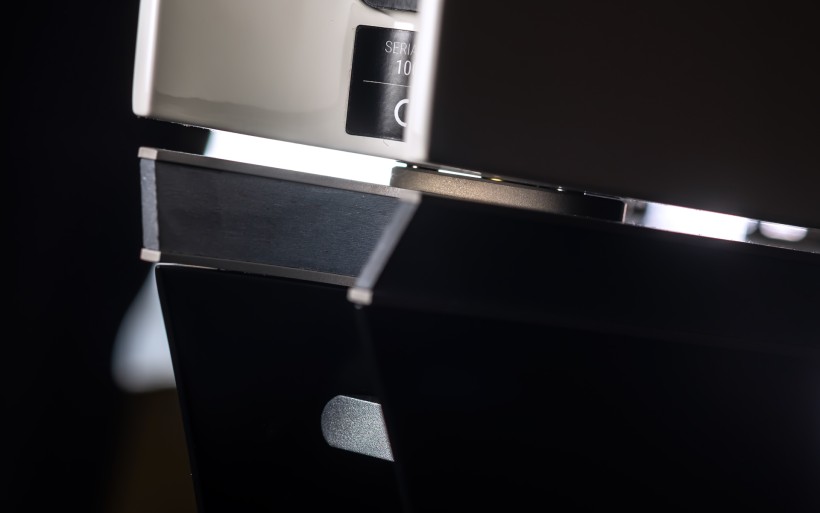 It’s tempting to say a word or two about Darkz Z2S, which is a fascinating product on its own right. Since it already had its review, let’s move onto stands. A HDF board in-between two titanium plates makes the upper deck, meant to provide yet another anti-vibration layer for the M1. This top floor shaped to nicely extend a speaker’s frame embeds three suede-lined openings meant for Darkz discs. The wing-alike leg concaved on the rear adds a speedy flare to the entire structure. The crossed base branched into four horizontal rods is finished with height-adjustable aluminium footers ready to couple with a customer’s Darkz isolators of choice. Darkz Z2S ball bearings introduce some play between the M1 and stands, which is by design. Although this was meant to be a slightly wobbly match, it’s perfectly stable.
It’s tempting to say a word or two about Darkz Z2S, which is a fascinating product on its own right. Since it already had its review, let’s move onto stands. A HDF board in-between two titanium plates makes the upper deck, meant to provide yet another anti-vibration layer for the M1. This top floor shaped to nicely extend a speaker’s frame embeds three suede-lined openings meant for Darkz discs. The wing-alike leg concaved on the rear adds a speedy flare to the entire structure. The crossed base branched into four horizontal rods is finished with height-adjustable aluminium footers ready to couple with a customer’s Darkz isolators of choice. Darkz Z2S ball bearings introduce some play between the M1 and stands, which is by design. Although this was meant to be a slightly wobbly match, it’s perfectly stable. Now it’s time to explain why this story came to be. I’ve never heard a monitor set as expensive as the M1 and none other I’ve auditioned came any close in this regard, so its extreme pedigree originally had me in the blank. Upon listening to this product for the first time in the 130m2 Aalborg room I saw a challenge that most likely I wouldn’t know how to tackle back then. During the second encounter at the local distributor’s far smaller living room the M1 fronted by the Aavik I-880 integrated amp felt less intimidating. From there it made its way to my acoustically more damped place with electronics groomed for other traits. Most importantly, each time the M1 behaved differently, as if it had skills to adapt to surroundings and many faces to show. These three experiences proved utmost helpful in understanding this speaker set just about enough to now write about it. It’s a polarizing product, but its price has little to do with this I think.
Now it’s time to explain why this story came to be. I’ve never heard a monitor set as expensive as the M1 and none other I’ve auditioned came any close in this regard, so its extreme pedigree originally had me in the blank. Upon listening to this product for the first time in the 130m2 Aalborg room I saw a challenge that most likely I wouldn’t know how to tackle back then. During the second encounter at the local distributor’s far smaller living room the M1 fronted by the Aavik I-880 integrated amp felt less intimidating. From there it made its way to my acoustically more damped place with electronics groomed for other traits. Most importantly, each time the M1 behaved differently, as if it had skills to adapt to surroundings and many faces to show. These three experiences proved utmost helpful in understanding this speaker set just about enough to now write about it. It’s a polarizing product, but its price has little to do with this I think.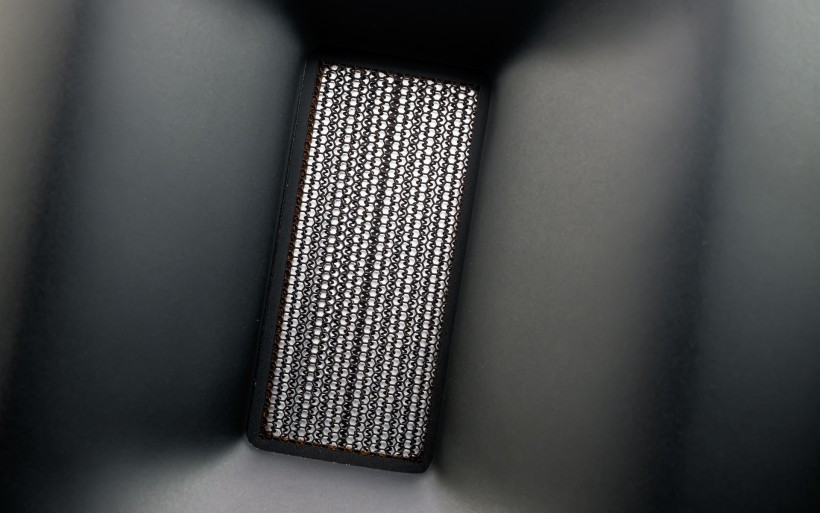 In my second Aalborg report I wrote about the M1 that: “it didn’t behave like the similarly sized already remarkable Silver Supreme 01 sibling. Rather, it was something else entirely and unlike any other monitor set I’ve ever experienced. It didn’t sound like a compact stand-mount warrior to begin with, as if it had means to go where its breed doesn’t, and pull stunts it honestly shouldn’t in… 130m2 spaces. Then again, expecting the unusual from a small speaker set priced at €94’000/pr seems justified. I’m sure that this very ambitious high-performance high-tech project will break quite a few rules.”. This is key. In the largest Aalborg room where it had lots of space around, the compact M1 staged enormously large and provided proper big-bore sound at party SPL without any sensible struggle, as if it were tailored specifically for such places. Since its two close drivers make it almost a point-source type, it projected highly articulated pinpoint accurate sound that was as deep as it was spatially grand. In the same room Børresen 05 floorstanders scored significantly higher notes on overall ease, heft, tactility, power and of course bass extension. That however was expected and not important in the grand scheme. The sensation back then still was as if the M1 didn’t get the memo that graceful flexing in large spaces hostile for compact stand-mount products wasn’t allowed. Danes already had used it at several shows in really large rooms to stress that point.
In my second Aalborg report I wrote about the M1 that: “it didn’t behave like the similarly sized already remarkable Silver Supreme 01 sibling. Rather, it was something else entirely and unlike any other monitor set I’ve ever experienced. It didn’t sound like a compact stand-mount warrior to begin with, as if it had means to go where its breed doesn’t, and pull stunts it honestly shouldn’t in… 130m2 spaces. Then again, expecting the unusual from a small speaker set priced at €94’000/pr seems justified. I’m sure that this very ambitious high-performance high-tech project will break quite a few rules.”. This is key. In the largest Aalborg room where it had lots of space around, the compact M1 staged enormously large and provided proper big-bore sound at party SPL without any sensible struggle, as if it were tailored specifically for such places. Since its two close drivers make it almost a point-source type, it projected highly articulated pinpoint accurate sound that was as deep as it was spatially grand. In the same room Børresen 05 floorstanders scored significantly higher notes on overall ease, heft, tactility, power and of course bass extension. That however was expected and not important in the grand scheme. The sensation back then still was as if the M1 didn’t get the memo that graceful flexing in large spaces hostile for compact stand-mount products wasn’t allowed. Danes already had used it at several shows in really large rooms to stress that point. At Jacek’s acoustically sorted regularly sized living room the M1 compared to his daily driver Martin Logan Summit X. The difference between these products was very clear. The electrostatic latter did the usual in form of radiant happy nuanced airy informative quick sound, clearly meant to present the first row at a close distance to our ears. In comparison to the M1 the floorstander’s gearing was very much in-your-face alike. Some listeners including my host fancy that sort of intense nicely suspended voicing a lot, just so that they can remain in direct contact with music all the time, also courtesy of closely served sound sources larger than they normally are. The Børresen flagship on the other hand spatially normalized the same repertoire by making these virtual frames shorter and presenting them within space of a far better sensation of depth and complexity. Having key instrumental and vocal outlines close and personal is effective or course and impressive. In the same setup the M1 however had them noticeably juicier, more threedimensional, tangible, natural and further away from the listening seat. Wiith the Summit X on the job the view was closer yet significantly more flat and rendered mainly in front of these speakers. Although I could easily live with that kind of engaging imaging, Jacek admitted that on the spatial front the M1 was more organized and on a wholly different much higher level. I agreed. As far as imaging presentation and its correctness go, the gap between both speaker sets was substantial and easily noticeable. The M1 portrayed main virtual shapes behind both cabinets yet not diluted or overly distant in the slightest. From there its advantage stretched to the overall finesse. The Børresen was plenty illuminated and clear, to a point where upon listening to it after the Summit X none of us felt that we were missing anything on resolution, treble shine, insight or any other trademark trait of the electrostatic kind. Shortly I’ll explain how the M1 presented highs and how investigative it was in general, but for now suffice it to say it had the clear upper hand on these counts, too. Most importantly, the Summit X struck me as a product meant to primarily flaunt spatial stunts typical for electrostats, while the M1’s tuning felt more complete, sophisticated, elegant, less forceful and easier on ears. Here it’s worth noting that the former’s active bass dug sensibly deeper, but considering tracks we’ve listened to, so mainly real voices and instruments, the M1 had enough reach downstairs to produce sufficiently gutsy results and keep us happy. It didn’t sound overly thin or ethereal, not for a second. If anything, it was very rich and moist atop all high-performance virtues and top shelf clarity baked into its sonic profile. That gave me a good idea what kind of a product the M1 truly was. After about three hours of fun we packed it and drove to my place.
At Jacek’s acoustically sorted regularly sized living room the M1 compared to his daily driver Martin Logan Summit X. The difference between these products was very clear. The electrostatic latter did the usual in form of radiant happy nuanced airy informative quick sound, clearly meant to present the first row at a close distance to our ears. In comparison to the M1 the floorstander’s gearing was very much in-your-face alike. Some listeners including my host fancy that sort of intense nicely suspended voicing a lot, just so that they can remain in direct contact with music all the time, also courtesy of closely served sound sources larger than they normally are. The Børresen flagship on the other hand spatially normalized the same repertoire by making these virtual frames shorter and presenting them within space of a far better sensation of depth and complexity. Having key instrumental and vocal outlines close and personal is effective or course and impressive. In the same setup the M1 however had them noticeably juicier, more threedimensional, tangible, natural and further away from the listening seat. Wiith the Summit X on the job the view was closer yet significantly more flat and rendered mainly in front of these speakers. Although I could easily live with that kind of engaging imaging, Jacek admitted that on the spatial front the M1 was more organized and on a wholly different much higher level. I agreed. As far as imaging presentation and its correctness go, the gap between both speaker sets was substantial and easily noticeable. The M1 portrayed main virtual shapes behind both cabinets yet not diluted or overly distant in the slightest. From there its advantage stretched to the overall finesse. The Børresen was plenty illuminated and clear, to a point where upon listening to it after the Summit X none of us felt that we were missing anything on resolution, treble shine, insight or any other trademark trait of the electrostatic kind. Shortly I’ll explain how the M1 presented highs and how investigative it was in general, but for now suffice it to say it had the clear upper hand on these counts, too. Most importantly, the Summit X struck me as a product meant to primarily flaunt spatial stunts typical for electrostats, while the M1’s tuning felt more complete, sophisticated, elegant, less forceful and easier on ears. Here it’s worth noting that the former’s active bass dug sensibly deeper, but considering tracks we’ve listened to, so mainly real voices and instruments, the M1 had enough reach downstairs to produce sufficiently gutsy results and keep us happy. It didn’t sound overly thin or ethereal, not for a second. If anything, it was very rich and moist atop all high-performance virtues and top shelf clarity baked into its sonic profile. That gave me a good idea what kind of a product the M1 truly was. After about three hours of fun we packed it and drove to my place.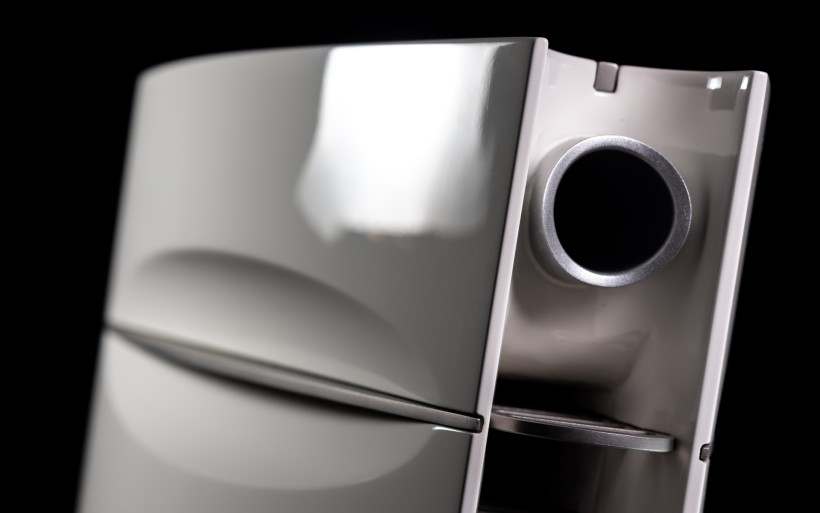 Past unboxing the M1 at my room Jacek stayed to have a listen to his loaner in an environment very different from his own. That was the perfect opportunity to exploit the man. Usually setting up speakers is on my shoulders, but not this time around. I asked my guest to do what he thought would be optimal, so I could stand with my arms crossed and just watch. Jacek positioned speakers wide, toed in to cross at the listening chair and about a meter or so from the front wall. Each’s rear port was fairly close to the boundary walls of my crib. Since I’m used to the nearfield headphone-like setup and many compact speaker sets allow it, I would’ve started with the M1 much closer to my ears. That wasn’t necessary. Jacek’s way had worked from the start and there was no need to change anything. The M1 positioned as described delivered virtual shapes nicely locked into familiar spaces, while admirably clean nicely controlled bass was completely free from any wobble. This was a splendid start.
Past unboxing the M1 at my room Jacek stayed to have a listen to his loaner in an environment very different from his own. That was the perfect opportunity to exploit the man. Usually setting up speakers is on my shoulders, but not this time around. I asked my guest to do what he thought would be optimal, so I could stand with my arms crossed and just watch. Jacek positioned speakers wide, toed in to cross at the listening chair and about a meter or so from the front wall. Each’s rear port was fairly close to the boundary walls of my crib. Since I’m used to the nearfield headphone-like setup and many compact speaker sets allow it, I would’ve started with the M1 much closer to my ears. That wasn’t necessary. Jacek’s way had worked from the start and there was no need to change anything. The M1 positioned as described delivered virtual shapes nicely locked into familiar spaces, while admirably clean nicely controlled bass was completely free from any wobble. This was a splendid start.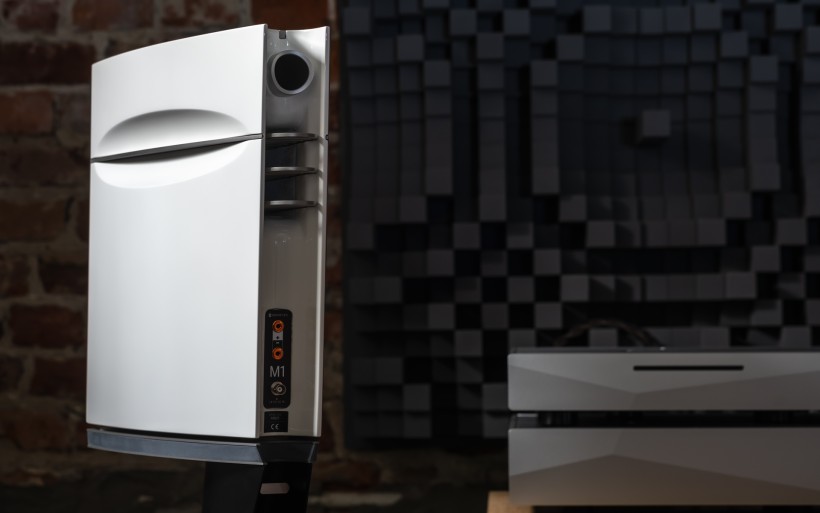 In my room the M1 sounded noticeably darker than at Jacek’s. That in fact was the very first thing the two of us had noticed. All Audio Group Denmark products including Aavik I-880 integrated at his house are primed for high contrasts, energy, quick reflexes, impact, openness, luminosity, effortlessness, high RPM and slams. These traits form the company’s signature backbone upon which other traits are built. Here one could say that too much overlap between speakers and electronics is counter-productive. In most cases I’d be the first to agree. Top shelf Audio Group Denmark stuff however escapes this schematic by sitting at the overall competence level so high that this is no longer an issue. In Jacek’s room the Aavik boosted the M1’s highly energized spatially grand lively sonics to net just the profile their makers fancy and always pursue. The integrated deck did so without fail, so this marriage was clearly meant to last. Meanwhile, my setup comprised of tubed hardware is as quick as it’s big on tone, while multiple noise-rejecting accessories and cables inject into it somewhat darkish tint that steals some sun. In this context Danes’ electronics also packed with their own noise trimmers boast the same kind of fetching blackness, yet lean towards quickness more than saturation to always remain on the cloudless highly articulated clear side. The most interesting part was in how expertly the M1 revealed differences between the two systems. The delta of these shifts upon moving from one to another had me very impressed.
In my room the M1 sounded noticeably darker than at Jacek’s. That in fact was the very first thing the two of us had noticed. All Audio Group Denmark products including Aavik I-880 integrated at his house are primed for high contrasts, energy, quick reflexes, impact, openness, luminosity, effortlessness, high RPM and slams. These traits form the company’s signature backbone upon which other traits are built. Here one could say that too much overlap between speakers and electronics is counter-productive. In most cases I’d be the first to agree. Top shelf Audio Group Denmark stuff however escapes this schematic by sitting at the overall competence level so high that this is no longer an issue. In Jacek’s room the Aavik boosted the M1’s highly energized spatially grand lively sonics to net just the profile their makers fancy and always pursue. The integrated deck did so without fail, so this marriage was clearly meant to last. Meanwhile, my setup comprised of tubed hardware is as quick as it’s big on tone, while multiple noise-rejecting accessories and cables inject into it somewhat darkish tint that steals some sun. In this context Danes’ electronics also packed with their own noise trimmers boast the same kind of fetching blackness, yet lean towards quickness more than saturation to always remain on the cloudless highly articulated clear side. The most interesting part was in how expertly the M1 revealed differences between the two systems. The delta of these shifts upon moving from one to another had me very impressed.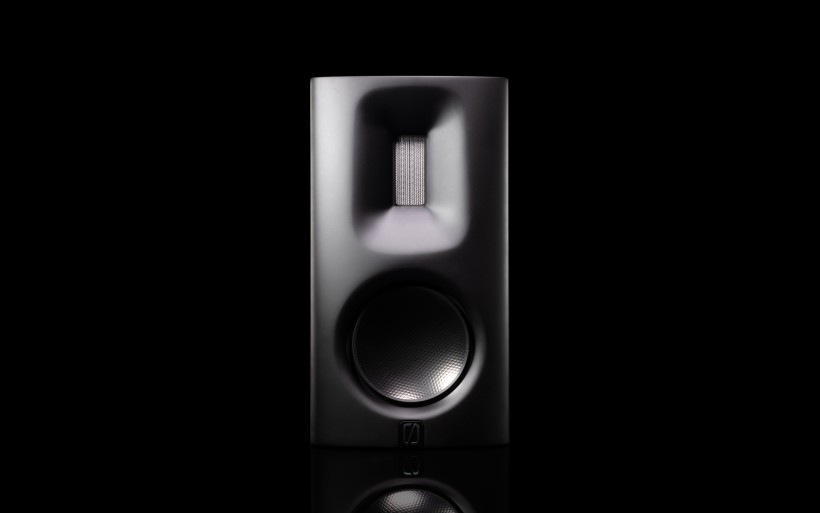 Although the M1’s willingness to highlight the two system’s sound this clearly was a major asset, it had its own personality just as any other audio product, albeit unusually complex. Let’s unpack. Speaker topologies, drivers, filtering networks and cabinet types dictate how a finished design sounds like as much as what it’s not meant to do. To put that into a perspective, crossoverless full-rangers rear-loaded with long transmission lines sound much more agile than big vented boxes with less sensitive large transducers yet nowhere near as fluffy and round. That said, the former isn’t ideal for mainly bloomy warm sound, the latter for quickness and snap. The M1’s most distinct traits should thus make it a hard-hitting spatially liberated radiant type a bit rough on the edges, so particularly useful in dissecting music into small bits and individually magnifying each. It acts the part indeed and gracefully at that, but it also packs no less generous tone, heft, substance and color if a system can provide. Hardware before the M1 in fact determines whether it’ll be a spatially wicked enjoyably fierce hi-performance fiend, or a charming sensual intimate atmospheric type meant to soothe and please. The Børresen’s broad arsenal of tools allows it to switch between these opposite profiles and their derivatives fluently and without fail. It takes remarkable adaptive skills and top versatility to do that.
Although the M1’s willingness to highlight the two system’s sound this clearly was a major asset, it had its own personality just as any other audio product, albeit unusually complex. Let’s unpack. Speaker topologies, drivers, filtering networks and cabinet types dictate how a finished design sounds like as much as what it’s not meant to do. To put that into a perspective, crossoverless full-rangers rear-loaded with long transmission lines sound much more agile than big vented boxes with less sensitive large transducers yet nowhere near as fluffy and round. That said, the former isn’t ideal for mainly bloomy warm sound, the latter for quickness and snap. The M1’s most distinct traits should thus make it a hard-hitting spatially liberated radiant type a bit rough on the edges, so particularly useful in dissecting music into small bits and individually magnifying each. It acts the part indeed and gracefully at that, but it also packs no less generous tone, heft, substance and color if a system can provide. Hardware before the M1 in fact determines whether it’ll be a spatially wicked enjoyably fierce hi-performance fiend, or a charming sensual intimate atmospheric type meant to soothe and please. The Børresen’s broad arsenal of tools allows it to switch between these opposite profiles and their derivatives fluently and without fail. It takes remarkable adaptive skills and top versatility to do that.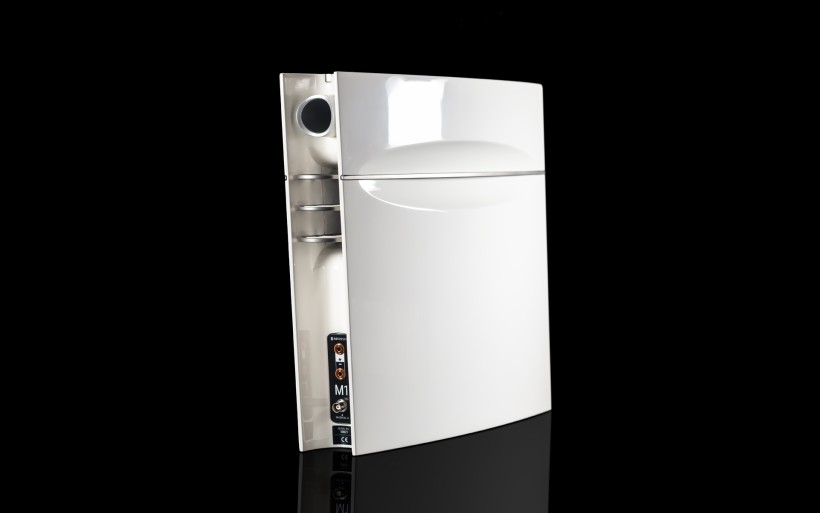 Hard membranes have the reputation of culprits responsible for hard stiff edgy sound. The Børresen 01 already proved me that this is not always the case. The M1 did this again now. It sounded particularly brilliant on difficult bass jobs when immediacy, impact, ripped outlines and control were in high demand, and also was highly developed on textural and muscular fronts just like the 01. Even during very loud playback the newcomer slammed without skipping a beat and any hints of shyness or struggle, while sensibly pleasing tone and muscularity always followed. The M1’s highly technical MO based on outlines, snap, elasticity and horsepower was always there yet served utmost casually, as if this sporty gearing was a part of a much bigger picture rather than the key focal point. This applied to the frequency ranges above bass, too. The manufacturer’s planarmagnetic tweeter in the M1 produced the most refined treble I’d heard yet; exceptionally informative, remarkably smooth, nuanced, delicate, admirably extended and… very sweet. Although the above-mentioned backdrop blackness can result in a touch hooded sound, the M1’s tweeters effortlessly served loads of tiniest details anyway, so the view remained tonally even and not dim at all.
Hard membranes have the reputation of culprits responsible for hard stiff edgy sound. The Børresen 01 already proved me that this is not always the case. The M1 did this again now. It sounded particularly brilliant on difficult bass jobs when immediacy, impact, ripped outlines and control were in high demand, and also was highly developed on textural and muscular fronts just like the 01. Even during very loud playback the newcomer slammed without skipping a beat and any hints of shyness or struggle, while sensibly pleasing tone and muscularity always followed. The M1’s highly technical MO based on outlines, snap, elasticity and horsepower was always there yet served utmost casually, as if this sporty gearing was a part of a much bigger picture rather than the key focal point. This applied to the frequency ranges above bass, too. The manufacturer’s planarmagnetic tweeter in the M1 produced the most refined treble I’d heard yet; exceptionally informative, remarkably smooth, nuanced, delicate, admirably extended and… very sweet. Although the above-mentioned backdrop blackness can result in a touch hooded sound, the M1’s tweeters effortlessly served loads of tiniest details anyway, so the view remained tonally even and not dim at all. To encapsulate the Børresen 01’s psych profile I wrote this: “It’s as complex as it’s contradictory. Fierce bass response with loads of energy and textural heft across the board, top shelf overall pronunciation and timing, grand staging potency and treble way up there with the best in the biz. All in all, a highly unrealistic product, especially considering its small footprint and rather regular topology.” This fully applies to the M1 as well, which also leaves the impression of performer without any obvious sonic downsides. However, after hearing this monster in three different rooms, mine was too small to fully tap into all the spatial might and shove it had at its makers’ HQ. This speaker set really thrives in large spaces, which to me stands out as the most polarizing dare I say bizarre thing about it. Floorstander sets are easy picks for those who have 50-100m2 listening rooms. It’s hardly a shocker that such audience won’t even consider a compact stand-mount product in there. Why would they? It doesn’t make any sense… unless you’re a customer without financial limits, who lusters for a petite luxurious two-way groomed to shock and awe in such rooms instead of collapsing. The Børresen M1 fits that profile to perfection. It also exists because probably quite a few wealthy people expressed their interest in that sort of a product. The M1 is not meant for 99,99% of audio enthusiasts out there, but the last 0,01% may in fact be very happy about such a purchase.
To encapsulate the Børresen 01’s psych profile I wrote this: “It’s as complex as it’s contradictory. Fierce bass response with loads of energy and textural heft across the board, top shelf overall pronunciation and timing, grand staging potency and treble way up there with the best in the biz. All in all, a highly unrealistic product, especially considering its small footprint and rather regular topology.” This fully applies to the M1 as well, which also leaves the impression of performer without any obvious sonic downsides. However, after hearing this monster in three different rooms, mine was too small to fully tap into all the spatial might and shove it had at its makers’ HQ. This speaker set really thrives in large spaces, which to me stands out as the most polarizing dare I say bizarre thing about it. Floorstander sets are easy picks for those who have 50-100m2 listening rooms. It’s hardly a shocker that such audience won’t even consider a compact stand-mount product in there. Why would they? It doesn’t make any sense… unless you’re a customer without financial limits, who lusters for a petite luxurious two-way groomed to shock and awe in such rooms instead of collapsing. The Børresen M1 fits that profile to perfection. It also exists because probably quite a few wealthy people expressed their interest in that sort of a product. The M1 is not meant for 99,99% of audio enthusiasts out there, but the last 0,01% may in fact be very happy about such a purchase.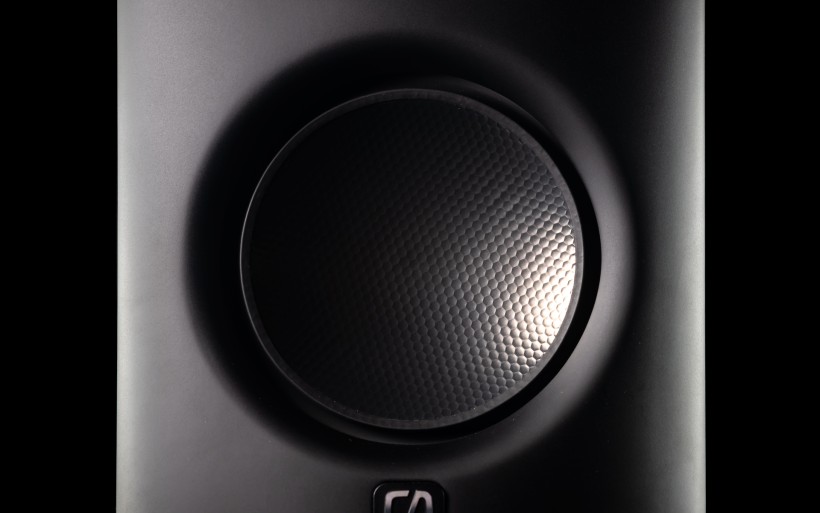 The M1 had to fight against sound|kaos Vox 3afw monitors just as any other speaker loaner sent my way. Some background info about the latter’s fight with the Børresen 01 is in order before getting there. The Vox was leaner, more contoured and sunnier. The Dane played it more grounded and darker yet was as articulated and had its treble finer, posher and a fair bit better overall. The Swiss retaliated on lower bass reach, while the Børresen had the upper hand on control, quickness and muscularity to become the more fearless, massive and spatially larger of the two. The Vox put expressiveness, meticulousness and intimacy on the pedestal to emphasize virtual outlines, their directness and tangibility. The 01 projected images a bit more distant, dreamier, thicker and more uniform from left to right. During that comparison I also wrote that the Vox’s boutique widebanders promote on-stage presence and charm off-limits to any other transducer type including those inside the Børresen. The latter however was the one to beat on ripped dynamics and contrasts, slamming potency, gutsiness and top shelf resolution. Since I’m a sucker for the Vox’s mental aural-bubble like spatial MO that’s quite frankly irreplaceable to me, everything the 01 did still wasn’t enough for me to develop cravings for it. The M1 is a different story.
The M1 had to fight against sound|kaos Vox 3afw monitors just as any other speaker loaner sent my way. Some background info about the latter’s fight with the Børresen 01 is in order before getting there. The Vox was leaner, more contoured and sunnier. The Dane played it more grounded and darker yet was as articulated and had its treble finer, posher and a fair bit better overall. The Swiss retaliated on lower bass reach, while the Børresen had the upper hand on control, quickness and muscularity to become the more fearless, massive and spatially larger of the two. The Vox put expressiveness, meticulousness and intimacy on the pedestal to emphasize virtual outlines, their directness and tangibility. The 01 projected images a bit more distant, dreamier, thicker and more uniform from left to right. During that comparison I also wrote that the Vox’s boutique widebanders promote on-stage presence and charm off-limits to any other transducer type including those inside the Børresen. The latter however was the one to beat on ripped dynamics and contrasts, slamming potency, gutsiness and top shelf resolution. Since I’m a sucker for the Vox’s mental aural-bubble like spatial MO that’s quite frankly irreplaceable to me, everything the 01 did still wasn’t enough for me to develop cravings for it. The M1 is a different story.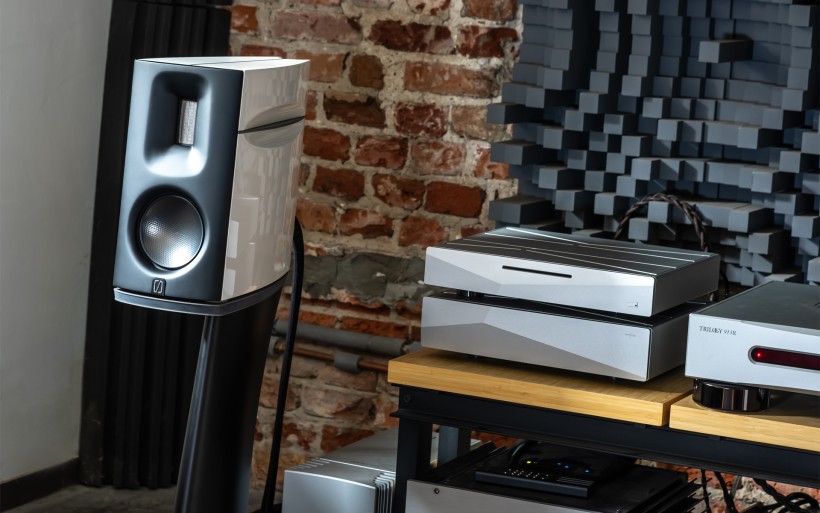 Although the M1 isn’t a widebander type, it had its own spatial ace up its sleeve. In a larger room where its enclosures would’ve had more space around them, it’d largely grant me access to the same bubble realm I like so much. I already had a taste of this in Aalborg, so I know it’s attainable. At my place the newcomer positioned as per Jacek’s recipe already staged frames right in front of me and on the sides in utmost present, juicy and intense fashion. Had I met the tall spacing criteria, things could’ve gotten only better from there. Most importantly, the M1 struck me as more developed than its sibling on spatial intimacy, presence and suchness, which was a wholly positive and meaningful change. The former also proved a more advanced speaker than the Vox on all fronts already won by the 01 and then some. As much as I adore the Swiss and as highly articulated, precise, resolved and illuminated it already is, against the M1 it turned out fluffier, rounder, cloudier, lazier and not quite as gifted on finest treble shimmers and decay. It took a while to find a compact passive speaker set I could safely put above the sound|kaos. Nearly eight times costlier M1 has what it takes to sit on that pinnacle, hence the award below.
Although the M1 isn’t a widebander type, it had its own spatial ace up its sleeve. In a larger room where its enclosures would’ve had more space around them, it’d largely grant me access to the same bubble realm I like so much. I already had a taste of this in Aalborg, so I know it’s attainable. At my place the newcomer positioned as per Jacek’s recipe already staged frames right in front of me and on the sides in utmost present, juicy and intense fashion. Had I met the tall spacing criteria, things could’ve gotten only better from there. Most importantly, the M1 struck me as more developed than its sibling on spatial intimacy, presence and suchness, which was a wholly positive and meaningful change. The former also proved a more advanced speaker than the Vox on all fronts already won by the 01 and then some. As much as I adore the Swiss and as highly articulated, precise, resolved and illuminated it already is, against the M1 it turned out fluffier, rounder, cloudier, lazier and not quite as gifted on finest treble shimmers and decay. It took a while to find a compact passive speaker set I could safely put above the sound|kaos. Nearly eight times costlier M1 has what it takes to sit on that pinnacle, hence the award below.
The automotive industry’s halo cars are concept designs meant to impress with innovative technologies and show us how the future may look like. These vehicles set trends, determine the path their makers want to pursue and of course are subjects of heated conversations. When I look at the Børresen M1, I see in it the audio equivalent of such a car. The only difference is that you can buy this insane speaker set. Although recommending it to anyone seems out of touch and pointless, that doesn’t collide with the fact that this is the best passive stand-mount product in my roster. Now I know how compactly dressed €94’000 sounds like and you know that this curio exists. The rest is up to millionaires and their commensurably deep wallets.
Associated Equipment:
- Amplifier: Trilogy 995R, FirstWatt F7, Enleum AMP-23R
- DAC: LampizatOr Pacific (KR Audio T-100 / Living Voice 300B + KR Audio 5U4G Ltd. Ed.)
- Speakers: Boenicke Audio W11 SE+, sound|kaos Vox 3afw
- Transport: Innuos Statement, fidata HFAS1-S10U
- Preamplifier: Trilogy 915R, Thöress DFP
- Speaker cables: Boenicke Audio S3, LessLoss C-MARC
- Headphones: HifiMan Susvara
- Speaker signal conditioning: LessLoss Firewall for Loudspeakers, Boenicke ComDev
- Anti-vibration conditioning: 12x Carbide Audio Carbide Bases (under DAC, preamp and speakers)
- Interconnects: LessLoss Entropic Process C-MARC, Boenicke Audio IC3 CG
- Power components: Gigawatt PC-3 SE EVO+/LC-3 EVO, LessLoss C-MARC, LessLoss Entropic Process C-MARC, Boenicke Audio Power Gate, ISOL-8 Prometheus
- USB components: iFi audio Mercury3.0
- Rack: Franc Audio Accesories Wood Block Rack 1+3
- Network: Fidelizer EtherStream, Linksys WRT160N
- Music: NativeDSD
Retail prices of reviewed components in EU (incl. VAT):
- Børresen M1: €94’000/pr
Manufacturer: Børresen Acoustics


